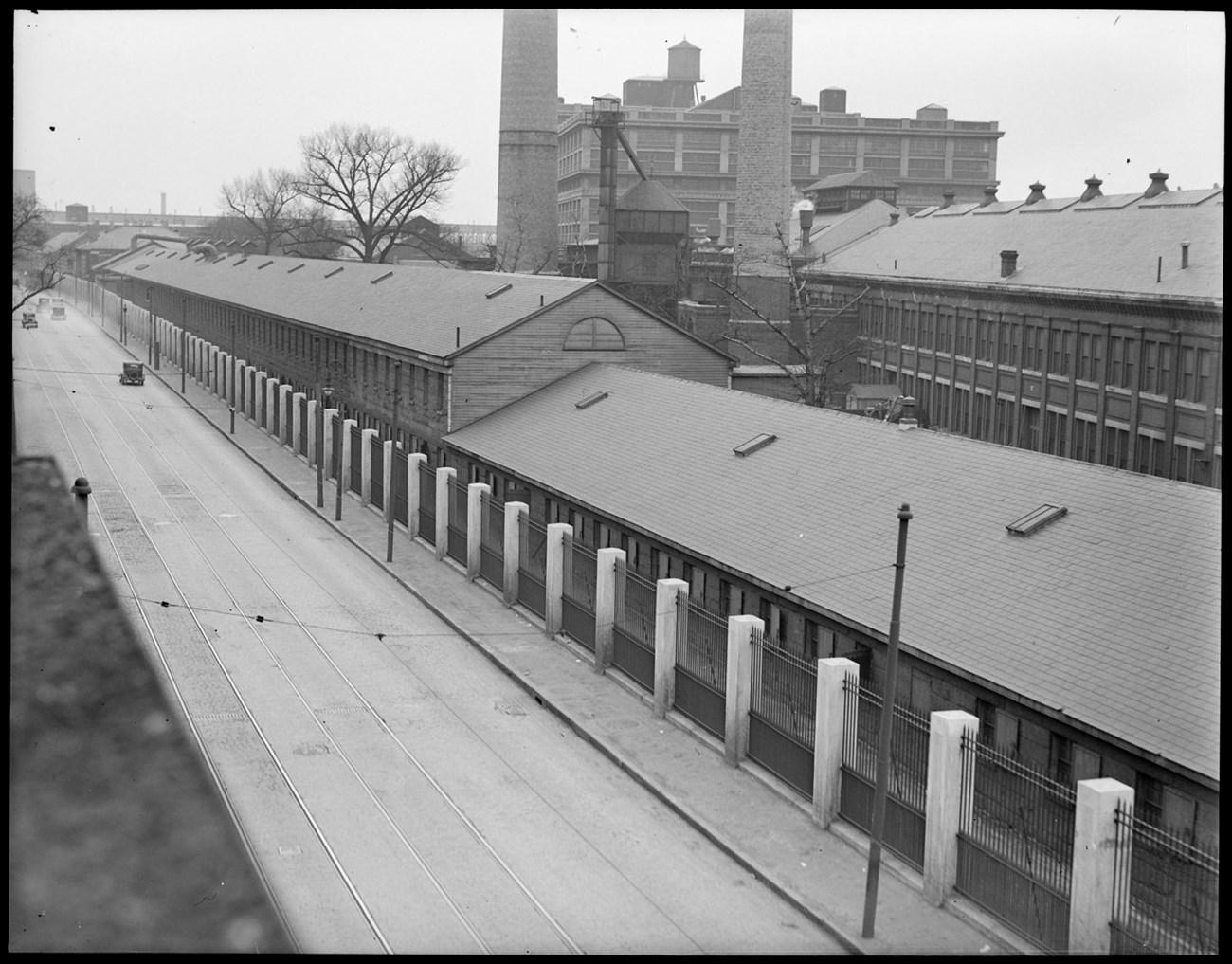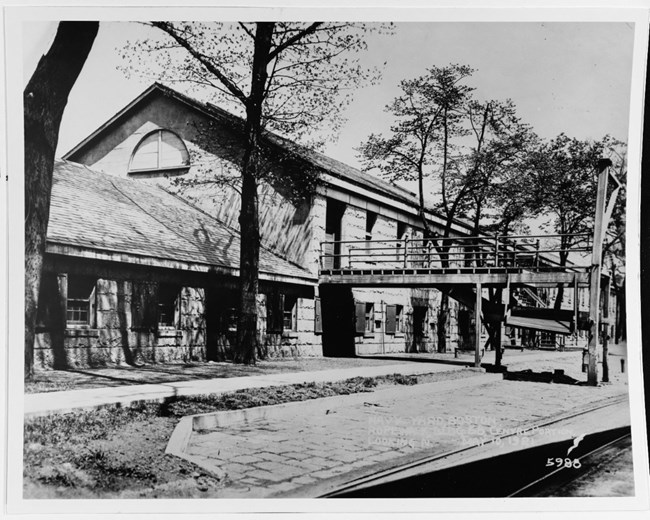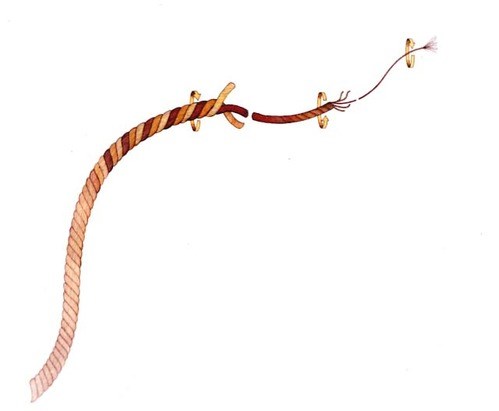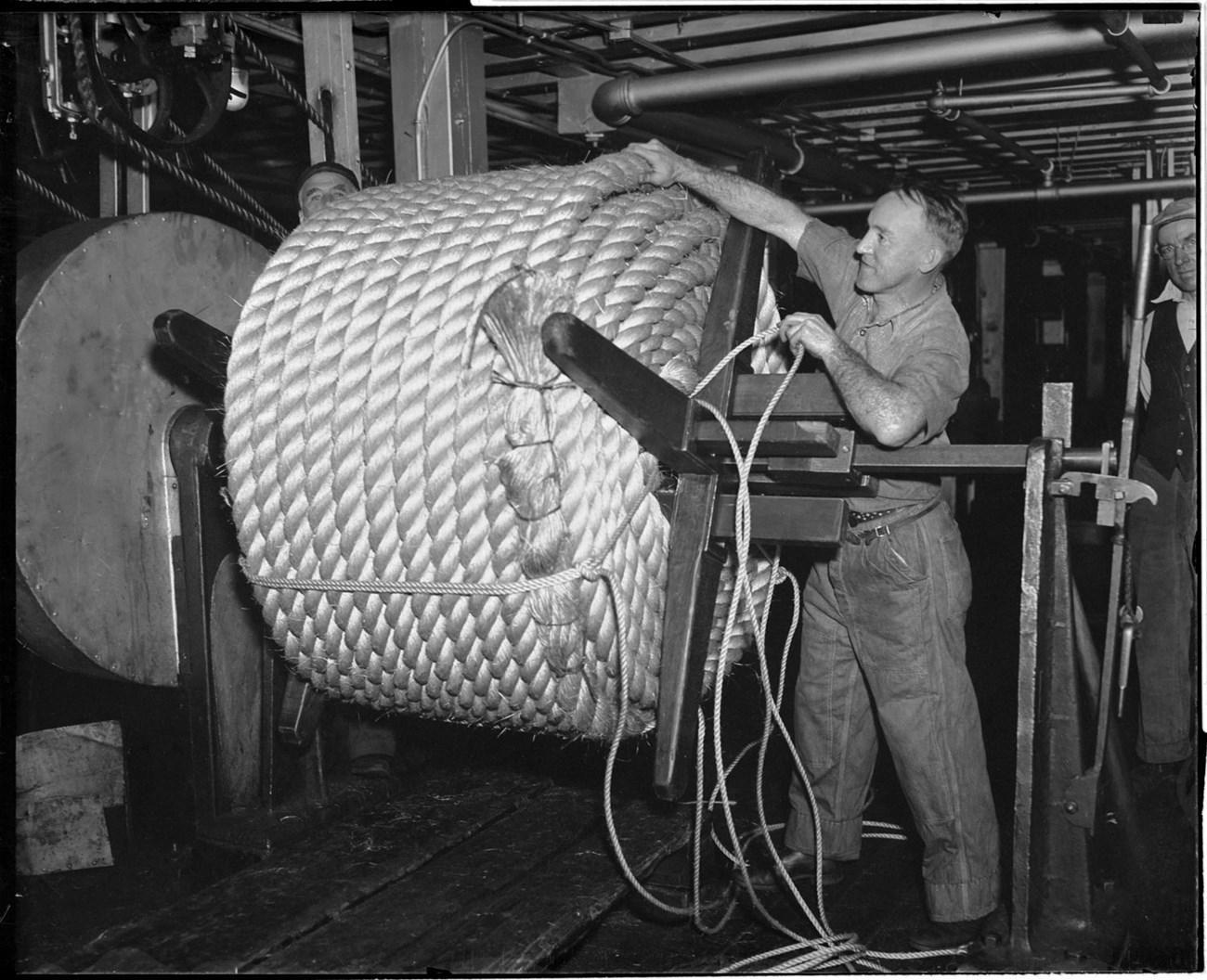Last updated: January 22, 2024
Article
Charlestown Navy Yard: Ropewalk

Courtesy of the Boston Public Library, Leslie Jones Collection.

Naval History and Heritage Command, NH 98180
Rope by Any Other Name
Most of the ropes on a ship have specific names. The majority are called "lines." If they are used to support the mast or control the sails, they are called "rigging." If the rigging is attached to the lower corner of a sail, it's called a "sheet," but if it raises the top of the sail, it's called a "halyard." If the rope is very heavy and used to haul up an anchor, it is often called "cable."
In fact, with few exceptions such as the bell rope (used to ring the bell) and the man rope (used to prevent seamen from falling overboard), very little of the rope on a ship is actually called "rope." Perhaps even more complicating, the term "cordage" is often used interchangeably with rope aboard a ship.
Despite all these different labels, the process of making lines, sheets, and rigging is still referred to as "ropemaking." During the 1800s, sailing ships required miles and miles of rope. The manufacture of that rope took place in specialized factories called ropewalks. Often long, narrow buildings, ropewalks had to be longer than the lengths of rope made there, stretching hundreds or even thousands of feet in a straight line.

NPS Illustration
Ropemaking for the Nation
Early ropewalks were generally outdoors and were quite literally walks, or paths, where workers laid out and twisted rope. The material of choice was hemp, which grew in long stalks and could be separated into many long and strong fibers. After processing the fibers, ropemakers had to spin the fibers into "rope yarn." Following the spinning, workers walked the length of the ropewalk multiple times, laying out and then twisting yarns into strands, and then laying out and twisting strands into rope. Depending on the need, this rope could even be twisted with other, similar lengths of rope, as the strands of an increasingly heavier, stronger length of cordage.
Boston's Atlantic trade depended on ropemakers for two centuries before the US Navy began to make rope in the Charlestown Navy Yard. Ropewalks were found on open land in today's Beacon Hill and Downtown neighborhoods, and even sometimes in public streets with the town's permission. After a fire destroyed many ropemaking buildings in 1794, ropemakers once used what is now the Boston Public Garden to lay out their ropes.
With the reestablishment of the US Navy in 1798 and the opening of the Charlestown Navy Yard in 1800, the Navy relied on these private ropemakers to provide rigging for their ships, like USS Constitution. But recognizing rope as a strategic resource, the Navy looked into manufacturing it directly.
The Navy selected the Charlestown Navy Yard as the home for its new ropemaking industry and hired Alexander Parris to be the structure's architect. Parris previously designed many buildings in Boston, including the Watertown Arsenal for the US Army and downtown Boston's Quincy Market. His ropewalk design is notable as being uniquely dedicated to permanent ropemaking.
Opened in 1838, the Navy Yard Ropewalk followed what is now Chelsea Street for 1325 feet, allowing workers to produce rope up to a quarter mile in length. Initially steam-powered, the facility made use of a number of innovations designed by local inventor Daniel Treadwell. Its sturdy granite and brick construction was also notable as an early attempt at fireproofing.

Courtesy of the Boston Public Library, Leslie Jones Collection.
The Charlestown Navy Yard Ropewalk became the Navy's biggest ropemaking facility. Although the Navy relied on private companies for the majority of its rope needs, the government factory could and would ramp up production quickly using government stores of rope-making fiber. In times of war, this Ropewalk acted as a buffer until private industry could respond.
Changing Roles
Even after the transition from sail to steam in the later half of the 1800s, ships still required miles of rope. A World War II battleship needed 34,000 feet of cordage and the Charlestown Navy Yard rapidly increased production after Pearl Harbor to its highest levels during World War II.
After the war, the United States government began looking into what industries it wanted to continue to operate directly. In 1953, Congress launched an investigation and considered the Charlestown Navy Yard Ropewalk for closure. Many, including master ropemaker David Himmelfarb, argued to Congress that the Ropewalk served a number of purposes from ropemaking to rope testing and development of new types of rope.
It was perhaps these other uses that kept the Ropewalk in operation until 1970 when other government-run industries closed. In fact, the Charlestown Navy Yard was the center for considerable research into treated natural rope and nylon rope in the 1950s and 60s. The fruit of this research can be seen today in the modern synthetic ropes used in everything from modern navy cordage to the ropes used by rock climbers and recreational boaters.
Sources
Himmelfarb, David, Interviewed by, Oral History, Date, Boston National Historical Park Boston Naval Shipyard Oral History Project, Boston National Historical Park.
Luce, Commodore S.B. USN, Textbook of Seamanship: The Equiping and Handling of Vessels under sail or steam. Van Nostrand Company New York 1891“Gloom is Heavy at Boston Navy Yard” New York Times April 23, 1973.
"Nomenclature of Naval Vessels," Naval History and Heritage Command, 1942. Accessed December 2021, https://www.history.navy.mil/content/history/nhhc/research/library/online-reading-room/title-list-alphabetically/n/nomenclature-naval-vessels.html.
Norton, Louis A. “Learning the Ropes.” Sea History National Maritime Historical Society, 2017.
"Origin of Navy Terminology." Naval History and Heritage Command. Accessed December 2021. https://www.history.navy.mil/content/history/nhhc/research/library/online-reading-room/title-list-alphabetically/o/origin-navy-terminology.html.
